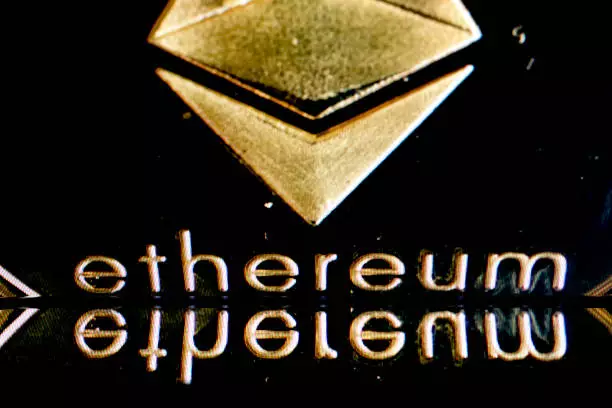In a realm often clouded by volatility and skepticism, Ethereum continues to draw a fascinating duality of opinions. The latest dip to around $2,100 has genuinely rattled some cages; however, the overarching sentiment from analysts seems to be one of cautious optimism. This isn’t just about short-term fluctuations but an assertion that something far more monumental looms on the horizon. In the complex world of cryptocurrency trading, where fear and euphoria often clash, understanding the current landscape is more than just reporting numbers; it requires grasping the underlying trends and sentiments driving investor behavior.
What stands out is the contrasting paths forecasted by analysts who are diving deep into market structures. While many see Ethereum’s recent drop as a cause for concern, others argue that it might simply be a fascinating lead-up to a spectacular rebound. Amidst this chaotic backdrop, it has become increasingly clear that robust analytical frameworks, such as Elliott Wave Theory and Wyckoff accumulation, are not merely sophisticated jargon but pivotal tools that inform the trading strategies of serious investors.
Charting the Complexity of Waves
One of the more compelling narratives comes from analysts employing Elliott Wave Theory, which implies that Ethereum is navigating through a complex corrective structure. This theory holds that market trends are cyclical and can be predicted based on historical price movements. A notable manager claims that Ethereum has completed its initial leg down—dubbed “wave A”—and is now primed for what many traders refer to as “wave B,” positing it could race back towards $2,792 before settling into a deeper “wave C.” This outlook envisions a temporary bounce being a prelude to an even steeper decline possibly hitting $1,706 before establishing a firmer base for long-term investment.
This type of analysis can feel dangerously speculative, yet it embodies the kind of rigorous scrutiny central to making educated decisions in a notoriously unpredictable market. It is this intricate dance of numbers and theories that attracts a certain breed of investor—one drawn not just by the promise of riches but by the thrill of deciphering a complex and ever-shifting puzzle.
Wyckoff’s Lens: A More Structured Perspective
On the other end of the analytical spectrum lies the Wyckoff method, a framework that seeks to untangle emotions from trading decisions. Analysts leveraging this model suggest that the recent price actions from Ethereum are not simply mere mistakes of market dynamics but the inevitable symbols of accumulation phases. The recent volatility, especially its ability to clear out ‘weak hands’—less committed investors—conditions the landscape for more robust, long-term buying.
Wyckoff advocates identify a series of phases: spring and test, leading towards a markup phase. The recent bounce back from lower prices, coupled with a predicted rise above significant thresholds, indicates not just recovery but the potential for a genuine upswing. Predictions have Ethereum re-establishing itself within a zone that could climb as high as $7,000 within the next year, contingent on how the market absorbs the fluctuations ahead.
Beyond The Numbers: The Emotional Landscape of Investing
While numbers and forecasts are vital, understanding the emotional climate surrounding Ethereum equally shapes the narrative. The crypto market is intricately tied to investor sentiment; moments of sheer panic can lead to unjustified sell-offs, while exuberant bullishness can propel prices beyond reasonable valuations. It is essential for investors to question not just the facts laid out in analysis but what these numbers evoke in the market’s psychological tapestry.
Ethereum’s journey is emblematic of a broader ideological struggle—the retreat and advance between skepticism and hope. The intense interest in both EBITDA growth and speculative trading results in a paradox: as volatility tests commitment, it also ingrains enthusiasm for the long-term vision that Ethereum holds for decentralized applications and blockchain innovation.
Thus, as we navigate these tumultuous waters, it’s essential not only to focus on price trends but to foster a deeper understanding of the forces in play. Ethereum’s price may fluctuate wildly, but the reasons fueling these movements hinge on much more than simple market mechanics—they tap into our emotional understandings of trust, potential, and the future of digital finance. Understanding these dynamics may be key to future prosperity in this realm of uncharted possibilities.















